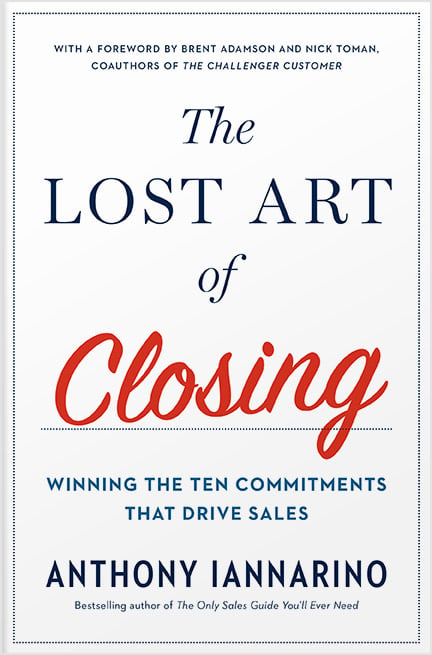One of the critically important, yet neglected, concepts in sales is the idea of “creating a preference” to buy from you and your company. Not only do you need to create a desire to work with you, but you must also create a preference for your solution and all that that entails.
Without meaning to, a high focus on “product” can cause people to believe that sharing their solution is how they are going to win. The marketing department will add to that by teaching them how to tell the company’s story as a way to differentiate from the competition, something useful but not enough to command a preference to buy from the salesperson or their company.
Some in sales believe that “what they sell” is capable of creating a preference on its own, and one strong enough to win a big deal. Their companies contribute to this belief by spending more time and energy teaching them to sell the features and benefits of their products than how to sell. This is now a rather grave mistake.
What’s Changed
In the past, there were specific sales approaches that worked well for many salespeople and sales organizations for a very long time. But as the world changed, some of the strategies and tactics lost their effectiveness, while others retained their value, evolving by keeping what worked and adding some novelty.
Some of those old strategies would direct the salesperson to spend time at the beginning of a meeting working to develop rapport, an idea that is still valuable in small doses, but too much of which will identify you as a time-waster. As sales have evolved, relationship selling is always essential, but it now requires that you create value for your client, in addition to being likable (which is not at all the same thing as needing to be liked).
Another strategy would have you try to gain credibility at the start of a sales call by sharing your company’s history and all the social proof available to prove your company is the kind of company someone can easily trust. You might also have been taught to tell people how long you’ve been with the company and your background.
Now, you are going to prove that you have the credibility by how you approach the sales conversation, not pointing at things external to your ability to provide sound advice about your client’s business and their future.
Past approaches would have you qualify opportunities while prospecting, ensuring that you don’t waste your time with a non-prospect. None of your prospective clients are going find your qualifying questions to be valuable as it pertains to the better results they need if they are even aware those results are available to them. See Dave Brock’s post here.
A significant change in sales approaches is one that starts with the idea that you are more likely to have to compel change instead of asking what kind of change your client believes they need to make.
One of the other more serious changes is the salesperson and their company’s accountability for producing results. We often use words like “partner,” a term that suggests a responsibility that extends beyond providing a product, service, or solution. Your clients are now going to measure you by the outcomes you deliver.
Because all of this is true, how you sell is how you win.
B2B Sales Now
A modern sales approach starts with some sort of exploration, something more than discovery and diagnosis, in that it includes the idea that your contacts may not yet believe they need to change. To be particularly adept and create a preference in the early stages, you are going to need to have the business acumen and situational knowledge to provide context that provides your contacts with a higher resolution lens through which to see their business and their future results.
Creating a preference also means helping your B2B buyers to determine what conversations they need to have to make the right decision, as well as the commitments they need to and keep–whether they buy from you or someone else. The idea is controlling the process, so your client doesn’t make mistakes that cause them to make the wrong decision. No more pushy sales tactics. The Lost Art of Closing shows you how to proactively lead your customer and close your sales. 
To be clear here, if what you recommend is right for your client, whether they choose you or your rival, then it is good, and right, and true. It’s also consultative sales.
One of the factors that will allow you to build a preference is your willingness and ability to engage your contacts in a conversation that will enable them to modify and adjust the solution to ensure it is going to work for them. When you help people get what they want, you make it easier for people to want to work with–and buy from–you.
A majority of the deals will find you selling to a group of people, some formal teams, and some ad hoc combinations of stakeholders deciding what to buy and from whom. Winning often means helping your contacts build consensus on their team, the starting point of which is often informing them that you are going to have to do this work together. The preference you need to create is going to mean that you need a substantial majority of the stakeholders to prefer you.
One of the reasons deals die is a lack of consensus. That lack of consensus can end up in a “no decision,” in large part because some people had unresolved concerns. Creating a sense of certainty around the decision also creates a preference, especially in a world where mistakes can be costly to your prospective client’s business and their reputation.
Winning
You win because the experience of having these conversations with you was more valuable to your contacts than other discussions, and because they believe that you are the best choice of partner for them going forward, i.e., a strong preference to work with—and buy from—you.

Get the Free eBook!
Learn how to sell without a sales manager. Download my free eBook!
You need to make sales. You need help now. We’ve got you covered. This eBook will help you Seize Your Sales Destiny, with or without a manager.
Download Now







.jpg?width=768&height=994&name=salescall-planner-ebook-v3-1-cover%20(1).jpg)


